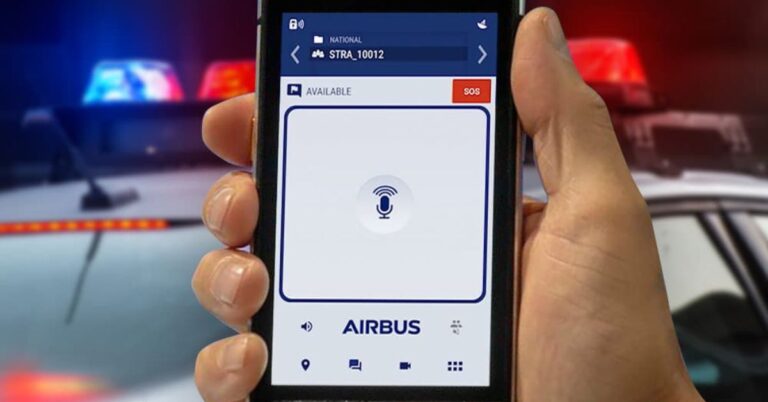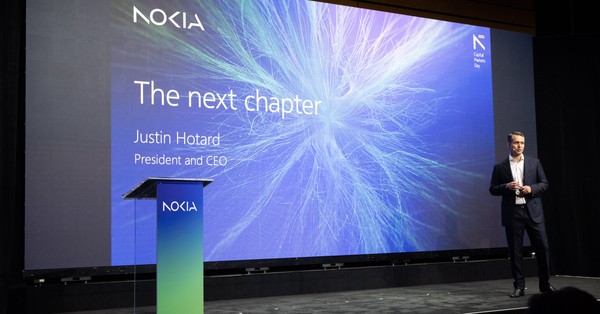Airbus Agnet Direct: Multi‑Mode Mission‑Critical Communications
Airbus Defence and Space has introduced Agnet Direct, a multi-mode extension to its 3GPP-based Agnet portfolio that keeps teams connected when commercial or private 4G/5G coverage is compromised.
Validated on France’s RRF Public Safety Broadband
Agnet Direct has been validated within France’s Réseau Radio du Futur (RRF), the nationwide secure broadband network for domestic security and emergency services. That matters because RRF is a European benchmark for public safety broadband, putting the solution through real operational tests. Launching at Milipol Paris signals Airbus’s intent to scale the capability to agencies and critical industries facing similar resiliency requirements.
Use Cases: Public Safety, Utilities, Transport, Industry
The primary users are public safety forces, emergency responders, and field teams in utilities, transport, and industrial operations that cannot tolerate communications failure. Wildfires, underground rescues, mass events, or network overloads are exactly the scenarios where off-network, local communications can be the difference between coordination and chaos.
Why Now: Bridging LMR to 3GPP MCX with Resilience
Agencies are transitioning from narrowband LMR to 3GPP mission-critical services (MCX) for richer voice, video, data, and location. But outages, coverage gaps, and cyber risk make single-path connectivity insufficient. Agnet Direct offers a pragmatic bridge: broadband where available, device-to-device when not, and seamless command linkage throughout.
How Agnet Direct Works: Network, Direct, Dual, Gateway
The solution combines a smartphone running the Agnet application with a smart remote speaker microphone (RSM) to deliver resilient communications across four operational modes.
Network Mode: Full 3GPP MCX over 4G/5G/Wi‑Fi
When 4G/5G or Wi‑Fi is fully available, users access the full MCX feature set—mission-critical push-to-talk, private calls, messaging, live video, and geolocation—secured with AES‑256. The RSM enhances audio and ergonomics for field operations and gloved use.
Direct Mode: Device‑to‑Device Off‑Network
If broadband degrades or disappears, the system shifts to a local device‑to‑device channel via the RSM to preserve on‑scene group communications. This narrowband-style direct mode keeps nearby users connected without relying on network infrastructure, enabling resilient coordination during fires, tunnels, or disaster zones.
Dual Mode: Command and Local Teams in Parallel
Supervisors can run network and direct modes in parallel, staying tied to control room talkgroups over 4G/5G while also managing local teams in direct mode. This dual view reduces command blind spots when parts of the operation fall outside broadband coverage.
Gateway Mode: Bridge Direct Groups to Control Rooms
If the control room must monitor an operation where most users lack broadband, one user with reliable 4G/5G can enable a gateway that bridges a talkgroup with the local direct channel. This keeps the incident connected to the wider command structure without additional deployables.
Standards and Integration for MCX Interoperability
Agnet Direct builds on Airbus’s 3GPP MCX stack and a broad partner ecosystem to support phased migration and interoperability.
3GPP MCX Compliance: MCPTT, MCVideo, MCData
Agnet is based on 3GPP mission-critical standards, covering MCPTT, MCVideo, and MCData, and Airbus is active in TCCA, GCF, and GSMA workstreams. Standards alignment lowers vendor lock‑in risk and supports testing and certification regimes essential for public safety procurement.
Interworking with TETRA and Tetrapol
Agnet integrates with existing TETRA and Tetrapol estates, enabling hybrid operations where radio users and smartphone users communicate across shared talkgroups. This supports staged migration strategies while preserving established workflows.
APIs and Ecosystem Integrations (CAD, GIS, IoT)
Open interfaces allow secure information exchange with third‑party systems, from CAD and GIS to IoT sensors and video platforms. Airbus lists tested compatibility with a range of professional devices and accessories, giving agencies choice in hardened endpoints.
Satellite Backhaul and Deployable Coverage
For extended coverage, Agnet supports satellite backhaul, including LEO options such as OneWeb, as well as deployable cells. This provides another layer of redundancy for remote or disaster-struck areas.
Deployment Options: Cloud, On‑Prem, Secure MVNO
Airbus offers cloud, on‑premises, and secure MVNO options to match regulatory, budget, and operational constraints.
Cloud SaaS or On‑Premise Deployment
For fast pilots and lower upfront costs, Agnet can be consumed as a SaaS from Airbus’s cloud with rapid onboarding. Public safety agencies with sovereign or integration needs can deploy on‑premises and tie into narrowband systems, CCTV, and IoT platforms.
Secure MVNO and Multi‑Operator Access
Agnet’s secure MVNO model supports simultaneous use of multiple mobile operators and private LTE/5G to improve availability and performance. Agencies maintain control over subscriber policies and security while leveraging commercial coverage footprints.
Devices, Platforms, and Licensing Tiers
The Agnet mobile app runs on Android and iOS, with support for rugged devices and Windows dispatch clients. Licensing tiers range from secure PTT and messaging to plans that add dispatch with mapping, live video, location tracking, and advanced emergency functions—useful for matching capabilities to roles and budgets.
Strategic Impact for Agencies, Industry, and Carriers
Agnet Direct reshapes how agencies and enterprises design for resilience across cellular, off-network, and satellite domains.
Benefits for Public Safety and Government
Dual and gateway modes reduce operational risk during cutovers to broadband and in major incidents with partial infrastructure failure. Agencies can formalize continuity-of-operations playbooks that blend MCX, device-to-device, and satellite paths under unified policy.
Benefits for Critical Infrastructure and Industry
Utilities, transport, and energy operators gain a business‑critical alternative to ad hoc apps, with compliance‑grade security and dispatch visibility. Tight integration with OT alerts and field mobility workflows can improve response times and worker safety.
Opportunities for MNOs and MVNOs
Carriers can position secure MVNO and multi‑operator access as a resilience layer for mission‑critical customers, bundling priority services, private networks, and satellite partnerships to meet stringent SLAs.
Next Steps: Trials, KPIs, and Governance
Prospective buyers should validate performance, interoperability, and operational fit through structured trials and clear KPIs.
Pilot Criteria and KPI Checklist
Test audio intelligibility in high‑noise scenes, switchover latency between modes, battery life with RSMs, and end‑to‑end encryption enforcement. Validate dispatcher situational awareness with live video, geolocation, and emergency workflows.
Interoperability and Coverage Planning
Confirm interworking with existing TETRA/Tetrapol talkgroups, CAD, and GIS, and define policies for when to invoke dual or gateway modes. Map coverage across commercial networks, private LTE/5G, and satellite to identify gaps.
Roadmap, Security, and Governance
Engage Airbus on 3GPP feature evolution, certification plans, and ecosystem partnerships. Align governance on identity management, device hardening, and incident response to sustain security at scale.
Bottom line: Agnet Direct brings a practical, standards‑based approach to resilient mission‑critical communications, giving agencies and enterprises a workable path to broadband without sacrificing off‑network survivability.









































